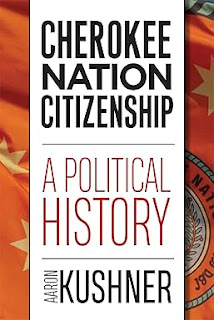 winner of the Louis I. Bredvold Prize in 2019, awarded by the University of Michigan.
winner of the Louis I. Bredvold Prize in 2019, awarded by the University of Michigan.
Mangrum applied the “Page 99 Test” to his new book, The Comedy of Computation: Or, How I Learned to Stop Worrying and Love Obsolescence, and shared the following:
Page 99 is nestled within the book’s third chapter, which is titled “The One about Authenticity.” Each chapter in The Comedy of Computation examines the cultural history of the computer from a different vantage point. The third chapter shows how an "ethics of authenticity" has shaped public attitudes toward computing in the United States. I argue that this ethics appears in both anxieties about computing as well as enthusiastic support for the way the technology seems to give power to ordinary people. Page 99 is looking back to formative early moments in the development of authenticity as a moral and social ideal. I’m discussing how the eighteenth-century philosopher Jean-Jacques Rousseau gave moral weight to authenticity, contrasting this version of the ideal with later writers and philosophers. According to Rousseau’s version of the ideal, the modern individual ought to seek to come into intimate contact with his or her inner self and then live in a way that’s consistent with that interior knowledge. In the following passage, I’m distilling some of the ideas from the preceding pages:Learn more about The Comedy of Computation at the Stanford University Press website.Whether contact with the self is a secular virtue or a religious practice, the authenticity of that contact almost by necessity must be determined by the individual. This is a key element in the discursive structure of authenticity. Who else can determine whether I see the inner truth about myself? Who else could know my inner state? The modern ideal of authenticity envisions a condition of inwardness whose very structure invites, and often even privileges, a circularity in which the self serves as the measure of itself.Here, I’m trying to identify a troubling circularity that tends to accompany an ethics of authenticity. This circularity goes back to Rousseau, but so many of the cultural sensibilities that surround the computer are also structured around it. This version of authenticity leads us to scorn or have suspicions about forms of mediation, which supposedly disrupt direct contact with our inner sense of self. The computer is, of course, a technology of mediation. Yet the basis for this skepticism about technological mediation is curiously circular. I find that circularity curious; it’s worth scrutinizing the problems and promises of these attitudes about authenticity—one among many aims of The Comedy of Computation.
I think the Page 99 Test fares pretty well with my book. On the one hand, if readers were to open my book to page 99 and encounter this line of argument, they’d likely be confused why a book about computing is talking about Rousseau. Readers would obviously need some context for this historical look backward. On the other hand, this is an important moment in the book's argument. I go on to discuss the paradox of authenticity in more detail, and I show how twentieth-century youth culture inherited and adapted an ethics of authenticity. I connect these historical trends to the cultural history of the computer in what I think are novel and under-appreciated ways. But the quoted passage above is one of the first moments where I begin to think critically about an ethics of authenticity. Is it a coherent moral discourse? What are the downsides to this ideal’s influence upon our attitudes toward technology and everyday life? I try to pose these questions in “The One about Authenticity,” and page 99 is a key moment in the development of that line of inquiry.
The Page 99 Test: Land of Tomorrow.
--Marshal Zeringue























